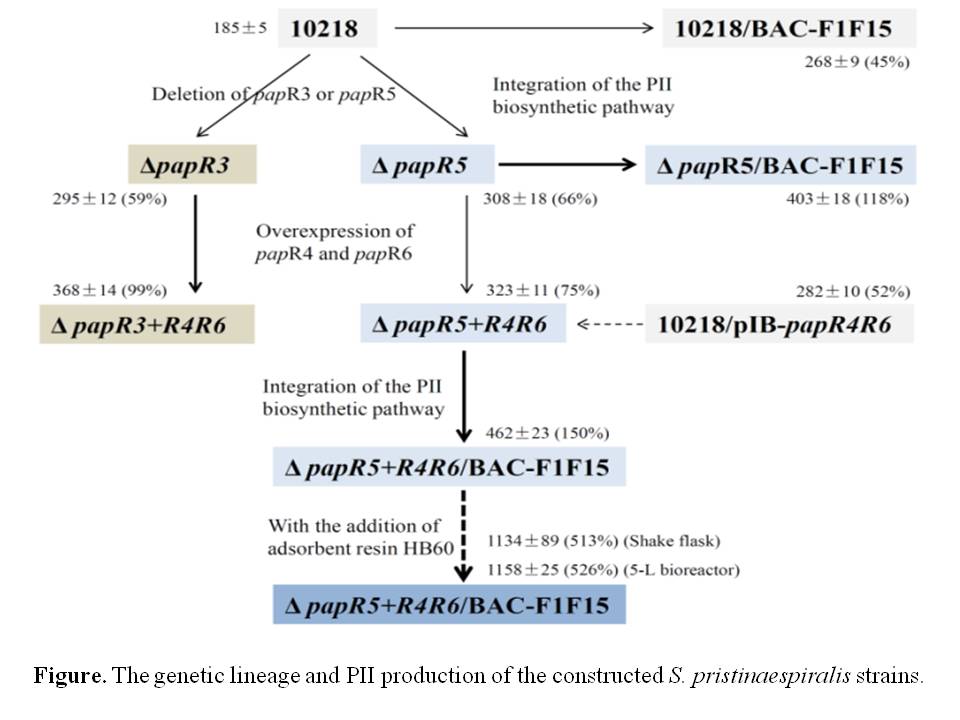Improvement of pristinamycin production in bacterium by combinatorial metabolic engineering
Antibiotic resistance in pathogens has been becoming a serious threat to human health. Therefore, it is highly urgent to develop new antibiotics against antibiotic-resistant bacteria. The antibiotic metabolite pristinamycin produced by
Streptomyces pristinaespiralis belongs to a streptogramin-type antibiotic that contains two different chemical classes of compounds, pristinamycin I (PI) and pristinamycin II (PII). These chemicals are the precursors used for producing the commercial drug Synercid to treat many drug-resistant pathogens, such as the methicillin-resistant staphylococci and vancomycin-resistant enterococci. However, the ability of the natural producer strain to synthesize pristinamycin is still not cost-effective and thereby required to be improved for scaling-up industrial production.
Recently, Ph D student LI Lei and Dr. LU Yinhua of Prof. JIANG Weihong’s group at the Institute of Plant Physiology and Ecology (SIBS, CAS), and Dr. GE Mei and Dr. RUAN Lijun from the Shanghai Laiyi Center for Biopharmaceuticals R&D, developed a combinatorial metabolic engineering strategy to successfully improve the PII production in bacterium.
In brief, the strategy employed includes the duplication of the biosynthetic gene cluster, deletion of the repressor genes, and overexpression of the activator genes. Thus, the PII titers of the engineered strain were improved up to 5.13- and 5.26-fold over the parental strain when fermented in the Erlenmeyer flask and 5-L bioreactor, respectively. In this study, the Gibson assembly protocol was also improved for manipulation of large DNA fragments with high GC contents, which will benefit the future rapid cloning of secondary metabolite biosynthetic gene clusters from actinomycetes.
This study entitled “A stepwise increase in pristinamycin II biosynthesis by Streptomyces pristinaespiralis through combinatorial metabolic engineering” was published online in the journal Metabolic Engineering on Feb 20, 2015.
This work was funded by the National Basic Research Program of China (2012CB721103) and the National High Technology Research and Development Program of China (2012AA022107).
